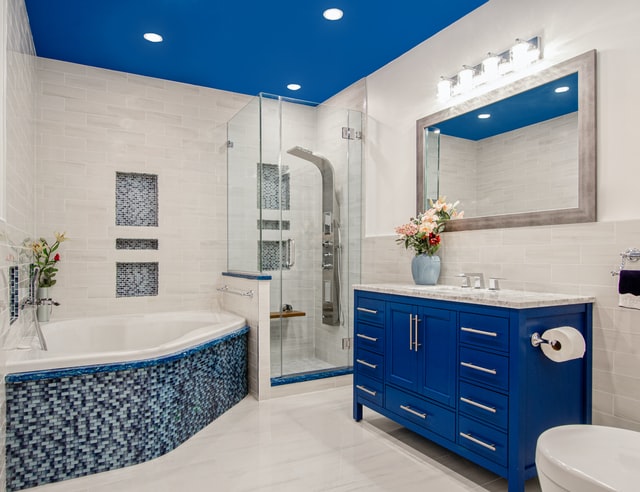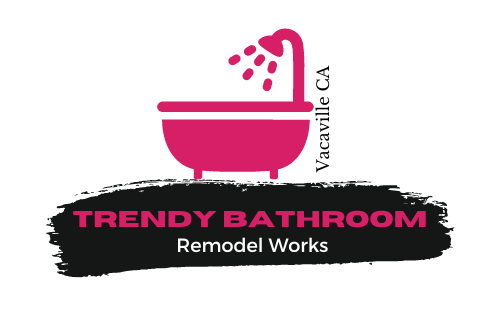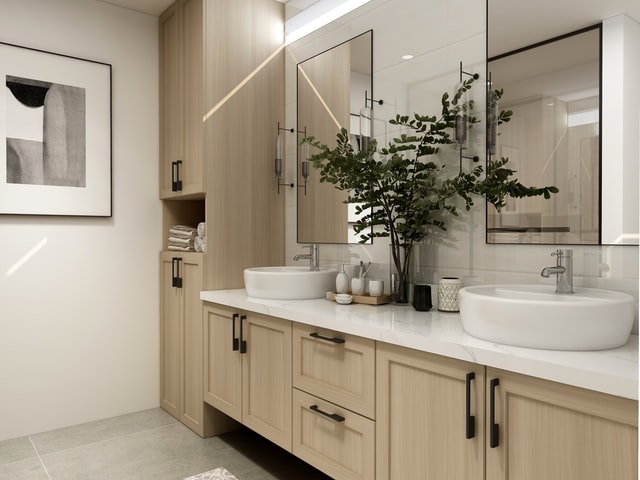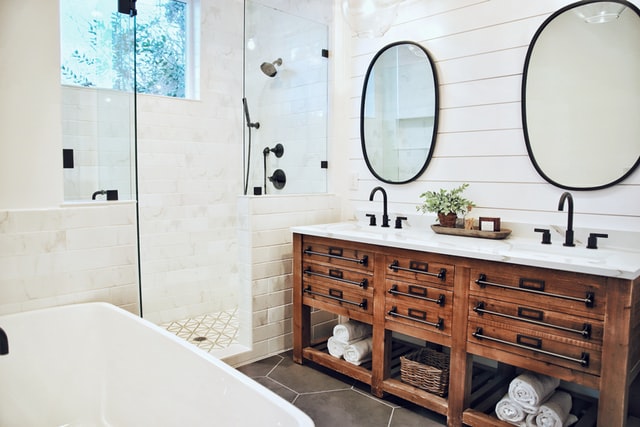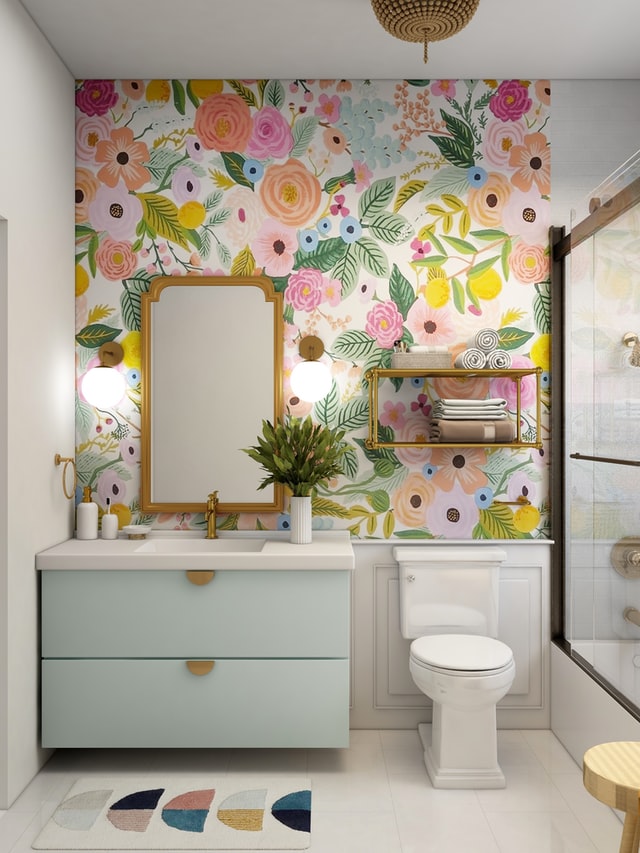Standard bathroom cabinets are framed or frameless. The latter gives better access to the interior and is becoming increasingly common. Many bath cabinets have soft-close doors and drawers to prevent slamming. Full-extension drawer glides are also a popular, widely available feature that let you see and access your items more easily. Drawers are most commonly constructed of wood with either dovetailed or stapled corners. Dovetailed joinery generally lasts longer. Some drawer boxes- especially in upscale contemporary cabinets-are made of metal.
Cabinets are generally divided into three groups: stock, semicustom, and fully custom. Stock cabinets come in the most popular sizes and are available for fast delivery or immediate pickup. In general, they cannot be modified and cost the least.
Some stock cabinets are meant to be assembled at home. If you’re having them professionally installed, their assembly will add to the labor cost, eliminating part of your savings. If they’re being assembled by a nonprofessional, the integrity of the cabinet’s construction could be compromised by a lower skill level.
Semicustom cabinets allow for some modifications by a manufacturer, typically depth, interior accessories, upgraded finishes, and decorative details like toekick valances. They may take up to two months to receive and will cost more than stock.
Fully-custom cabinets may be made in a factory or a local cabinet shop. Every detail from size to number of drawers to finish and decoration is made to order from either source. Manufacturing times and costs will vary greatly, but custom generally costs more and takes longer than stock or semicustom.
Vanities
The most basic vanity has a door section to contain the plumbing and is topped with a countertop and sink. (Some home centers sell sets that combine all three). Many users want drawers to hold their essentials, and wider vanities will include at least one. Having two or three stacked drawers next to the door area is a common configuration for a smaller bath.
More elaborate vanities may have two separate door sections for double sinks and a three-drawer bank between them. Sizes can range from 24 inches wide for a very compact single model to 78 inches or wider for a double.
It’s more common, though, to combine separate cabinets that are easier to get into a bathroom than to use one cabinet to create a larger double vanity area. This modular approach costs more but is easier to maneuver into place and provides more flexibility for drawer count and placement.
Cabinetry Hardware
Any cabinets with doors and drawers are going to have hinges and glides. Soft-close hinges and drawer glides that were once available only on semicustom or custom cabinets are now increasingly available on more affordable stock vanities. So are adjustable hinges that make a door easier to align at installation and over time by the homeowner. Vanity drawers don’t typically need to hold the same weight as a kitchen drawer full of silverware, so heavy-duty glides are not required. You are still going to want smooth motion and full extension for maximum convenience.
